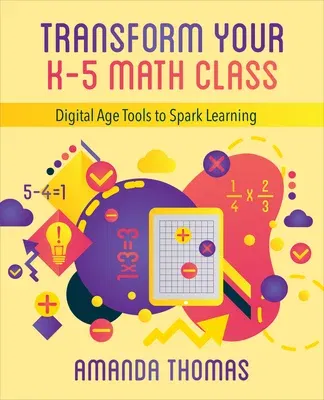Through detailed lessons and examples, discover how to integrate
technology in K-5 math to amplify and enhance your mathematics teaching
and drive student learning.
Instead of drill-and-practice apps and worksheets, what if technology
enabled exploration of math concepts? Instead of screens for
disconnected individual learning, what if technology fostered
mathematical discourse and collaboration? Instead of a one-size-fits-all
approach to teaching mathematics, what if we used technology to
differentiate to meet students' diverse needs?
Technology has the power and potential to support the teaching and
learning of math content at all grade levels, but the presence of
technology is insufficient unless it's paired with effective teaching
practices and meaningful content. This book poses and unpacks the above
questions and many more, with examples that illustrate how to integrate
technology in the K-5 math classroom, highlighting opportunities to
transform mathematics teaching through strategic technology use.
The book:
-
Illustrates two contrasting examples in each chapter, including
transcripts of sample class conversations, mathematical tasks,
illustrations of student work and reflection and discussion prompts.
-
Features discussion of research-based ideas relating to the contrasts
presented in the chapters, encouraging readers to connect what they
learn from the specific cases with the research on these topics.
-
Covers a variety of mathematics content areas such as functions and
algebraic thinking, geometry and measurement, and data and statistics.
-
Provides strategies for implementing the concepts in class, with ideas
and examples of tools based not on how they look but what they can do
in your mathematics teaching.
Today's technology offers more possibilities than ever for supporting
students in mathematics. This book draws upon the latest research in
technology and math education, while providing tools to incorporate
effective strategies into curriculum right away.
Audience: K-5 educators

